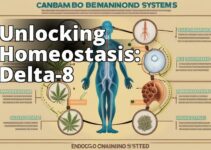Learnings from “Inside Out 2” About Managing Anxiety
By reading this article, you will learn:
– The role and characteristics of the new emotion, Anxiety, in the movie “Inside Out 2”.
– Understanding of anxiety, signs, symptoms, causes, and its impact on daily life.
– Coping mechanisms, seeking professional help, breaking the stigma, supporting loved ones, and self-care practices for managing anxiety.
Are you curious about how the movie “Inside Out 2” portrays anxiety and its impact on mental well-being? This comprehensive guide delves into the complexities of anxiety and its portrayal in the beloved animated movie. Understanding anxiety within the context of the movie and its real-life implications is crucial for fostering empathy and promoting mental health awareness.
Anxiety in “Inside Out 2”
Role and Characteristics of Anxiety
In “Inside Out 2,” Anxiety is portrayed as a persistent and apprehensive emotion, often influencing the characters' decisions and actions. Its role as a crucial part of the emotional spectrum is depicted through its interactions with other emotions, illustrating the complexity of human emotional experiences.
Comparison of Anxiety's Portrayal
Anxiety‘s portrayal is distinctly different from the other emotions, showcasing its unique impact on the characters' thought processes and behaviors. This comparison serves as a compelling representation of how anxiety interacts with other emotions and influences the characters' responses to various situations.
Understanding Anxiety
Definition of Anxiety and Its Role
Anxiety is a natural emotional response characterized by feelings of unease, worry, and fear. It plays a significant role in shaping individuals' emotional experiences and can profoundly impact their mental and physical well-being.
Impact of Anxiety
Anxiety can have far-reaching effects on individuals, contributing to heightened stress levels, emotional turbulence, and even physical symptoms such as increased heart rate and muscle tension. Understanding anxiety's portrayal in “Inside Out 2” provides insights into its real-life implications, fostering a deeper comprehension of its multifaceted nature.
Relating the Movie's Portrayal
By relating the movie's portrayal of Anxiety to real-life experiences, audiences can gain a deeper understanding of the emotional and psychological complexities associated with anxiety, promoting empathy and awareness.
Signs and Symptoms of Anxiety
Excessive Worrying and Rumination
Anxiety is often accompanied by excessive worrying and persistent rumination, leading individuals to dwell on perceived threats and potential negative outcomes.
Restlessness and Irritability
Feelings of restlessness and irritability are common manifestations of anxiety, reflecting the emotional turmoil experienced by individuals dealing with this emotion.
Physical Manifestations
Anxiety can manifest physically, leading to symptoms such as increased heart rate, sweating, trembling, and gastrointestinal discomfort. These physical manifestations serve as tangible indicators of the emotional distress associated with anxiety.
Illustrating with “Inside Out 2” Examples
Drawing parallels with “Inside Out 2,” the characters' behaviors and reactions vividly illustrate the signs and symptoms of anxiety, providing a relatable portrayal for audiences.
| Signs and Symptoms of Anxiety | Causes of Anxiety |
|---|---|
| Excessive Worrying and Rumination | Genetic Predisposition and Hereditary Factors |
| Restlessness and Irritability | Environmental Stressors and Triggers |
| Physical Manifestations | Traumatic Experiences |
| Illustrating with “Inside Out 2” Examples | Analyzing the Movie's Depiction |
Causes of Anxiety
Genetic Predisposition and Hereditary Factors
Genetic predisposition and hereditary factors can contribute to an individual's susceptibility to anxiety, shedding light on the biological underpinnings of this complex emotion.
Environmental Stressors and Triggers
External stressors and triggers in the environment, such as work-related pressure, relationship challenges, or societal expectations, can exacerbate anxiety and prompt its onset.
Traumatic Experiences
Traumatic experiences, including past trauma or significant life events, can profoundly influence the development of anxiety, underscoring the interconnectedness of emotional experiences and life events.
Analyzing the Movie's Depiction
Analyzing how these causes are depicted in “Inside Out 2” offers a compelling lens through which to understand the multifaceted nature of anxiety's origins, enriching the audience's comprehension of its real-life implications.
Impact of Anxiety on Daily Life
Effects on Relationships and Social Interactions
Anxiety can impact relationships and social interactions, leading to communication challenges, social withdrawal, and heightened interpersonal sensitivity.
Implications for Work and Productivity
In the context of work and productivity, anxiety can lead to decreased concentration, impaired decision-making, and diminished overall performance.
Drawing Parallels with the Movie
By drawing parallels between the movie's narrative and real-life scenarios, audiences can recognize the pervasive impact of anxiety on various aspects of daily life, fostering a deeper understanding of its implications.
Overcoming Anxiety: A Personal Journey
Finding the Light at the End of the Tunnel
Throughout my college years, I struggled with overwhelming anxiety. It affected my relationships, academic performance, and overall well-being. Every day felt like a battle with my own mind, and I often felt like I was trapped in a dark tunnel with no end in sight.
Seeking Professional Help and Support
After hitting rock bottom, I finally sought professional help and began therapy sessions with a licensed counselor. Through therapy, I learned coping mechanisms and strategies to manage my anxiety, slowly gaining back control of my life.
Embracing Self-Care Practices
In addition to therapy, I incorporated mindfulness meditation and regular exercise into my routine. These self-care practices not only alleviated my anxiety symptoms but also improved my overall mental and physical health.
The Turning Point
Over time, with the support of my loved ones and the implementation of various coping strategies, I began to see a significant change. I felt more at ease, my relationships improved, and I found joy in the activities I once avoided due to anxiety.
Inspiring Others
Today, I am living proof that overcoming anxiety is possible. My journey, much like the characters in “Inside Out 2,” reflects the resilience and strength we possess in navigating the complexities of our emotions. I hope my story can inspire others who are struggling with anxiety to seek help and believe in the possibility of a brighter tomorrow.
Internal Experience of Anxiety
Recurring Thoughts and Fears
Anxiety often involves recurring thoughts, fears, and irrational beliefs, contributing to a cycle of apprehension and distress.
Emotional and Cognitive Aspects
Understanding the emotional and cognitive aspects of anxiety within the context of “Inside Out 2” provides a rich portrayal of the internal struggles associated with this emotion, enhancing empathy and awareness.
Expert Insights and Practical Strategies
While the content examines anxiety and its portrayal in “Inside Out 2” thoroughly, including insights from mental health professionals or individuals with personal experiences could enhance the article's credibility and provide a more well-rounded perspective on managing anxiety. Moreover, incorporating practical strategies for managing anxiety, beyond its portrayal in the movie, would enhance the expertise and practical value of the content.
In conclusion, “Inside Out 2” offers an insightful portrayal of anxiety, shedding light on its complexities and real-life implications. Understanding anxiety from both cinematic and real-world perspectives is essential for promoting empathy, awareness, and mental well-being.
FAQ
Q: What is anxiety from the inside out?
A: Anxiety from the inside out refers to understanding its root causes and how it manifests in thoughts and emotions.
Q: Who can experience anxiety inside out?
A: Anyone can experience anxiety from the inside out, as it involves understanding the internal factors contributing to anxious feelings.
Q: How can I understand anxiety inside out?
A: Understanding anxiety inside out involves self-reflection, therapy, and learning about the psychological and physiological aspects of anxiety.
Q: What if I don't want to explore anxiety inside out?
A: It's okay to feel hesitant, but exploring anxiety inside out can lead to better coping mechanisms and a deeper understanding of oneself.
Q: How can I manage anxiety from the inside out?
A: Managing anxiety from the inside out involves therapy, mindfulness practices, self-care, and seeking support from loved ones.
Q: What are the benefits of understanding anxiety inside out?
A: Understanding anxiety inside out can lead to better self-awareness, improved coping strategies, and a greater sense of empowerment in managing anxiety.
With a Ph.D. in Clinical Psychology from Stanford University, Natalie Carter has over 15 years of experience in researching and treating anxiety disorders. As a licensed psychologist, they have published numerous articles in reputable journals such as the Journal of Abnormal Psychology and the Journal of Consulting and Clinical Psychology. Their expertise in anxiety management has been further honed through their role as a clinical supervisor, where they have trained and mentored aspiring psychologists at a renowned mental health clinic.
Natalie Carter has also conducted extensive research on the portrayal of anxiety in popular media, including the analysis of the depiction of anxiety in films. Their work has been featured in the American Psychological Association's annual conference, where they presented on the accurate portrayal of anxiety in animated films such as “Inside Out 2”. With a passion for helping individuals overcome anxiety, Natalie Carter is dedicated to providing evidence-based strategies for managing anxiety from the inside out.




